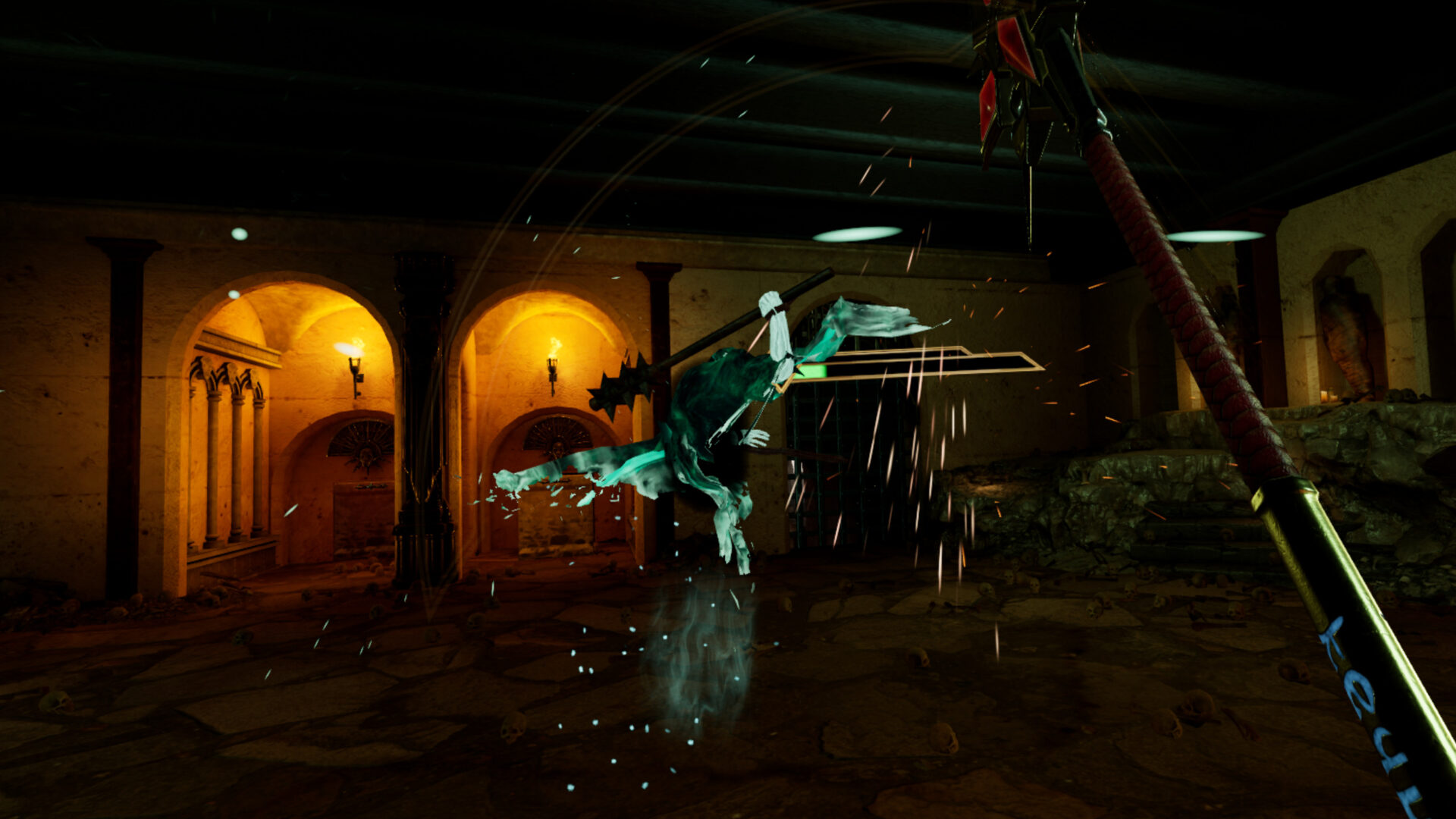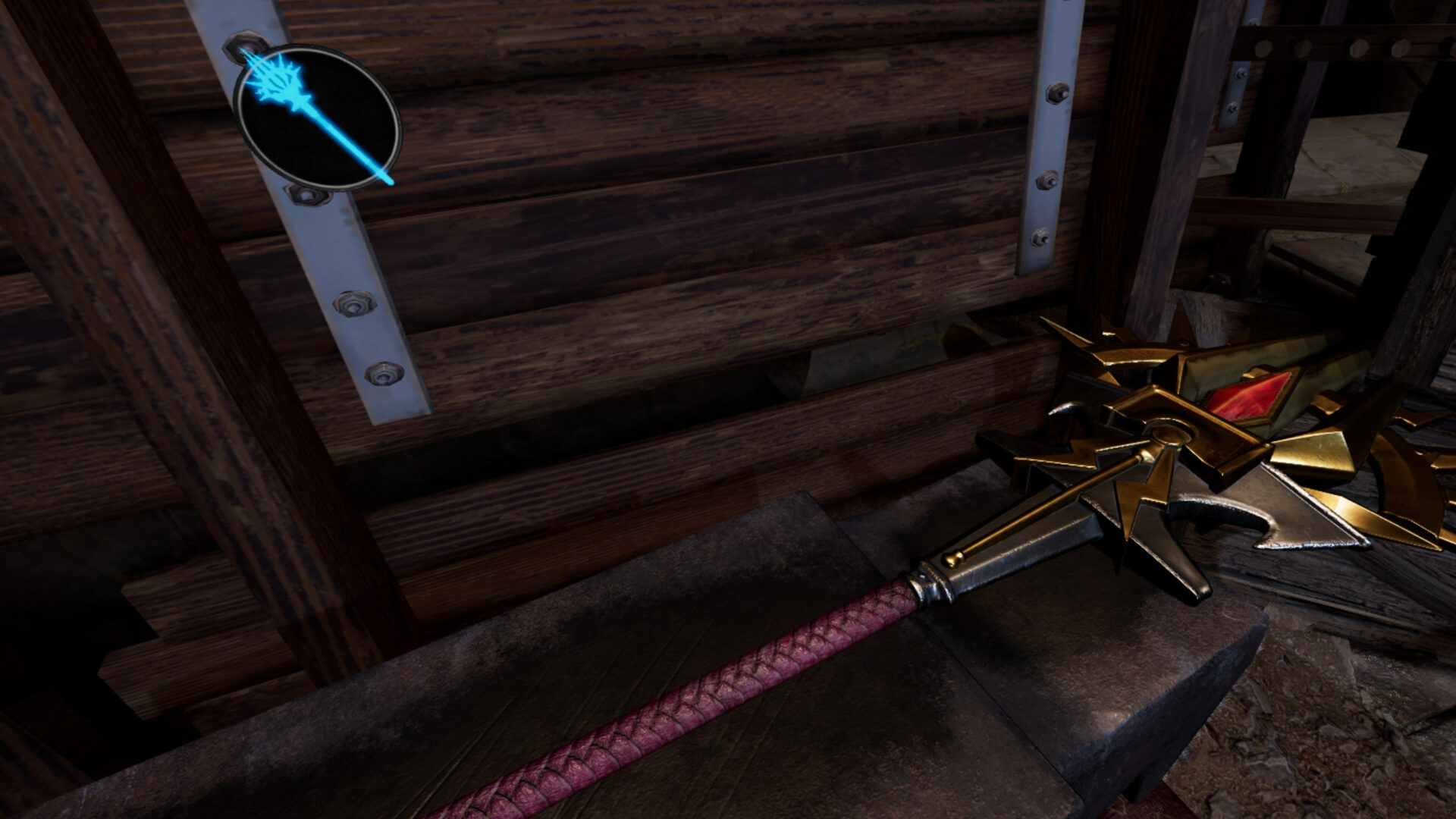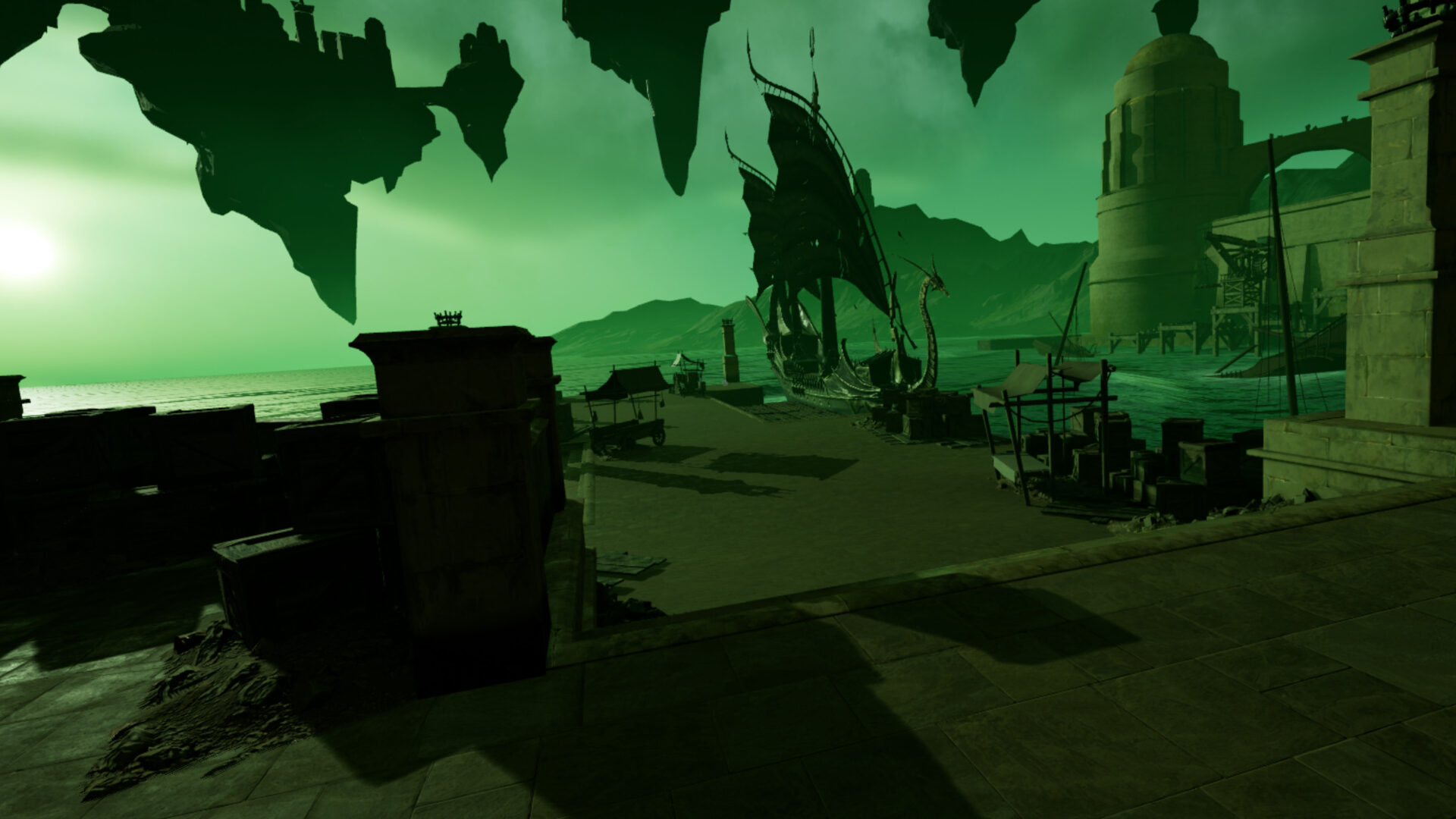Beat, electrocute and melt your opponents, for Sigmar!
Type: Singleplayer
Genre: Action
Developer: Carbon Studio
Publisher: Carbon Studio
Release date: 17 Nov, 2021


Overview
Both Warhammer Fantasy and Warhammer 40k have been a rollercoaster of experiences throughout the series of videogames that have been published for both brands: especially in the first case, we can find really solid games in the likes of Vermintide or Total War near titles like Man o’ War: Corsair. And this is without even counting the endless sea of despair made by poor mobile games. Unfortunately (or luckily, considering the situation) Warhammer Age of Sigmar: Tempestfall doesn’t set a new high bar regarding the game’s quality, but it also isn’t the worse game in the franchise: instead, it sits uncomfortably around the middle.
Bashing Heads in VR
VR games are really great for immersion, but are very limited in other aspects, like movement. It is great to shoot enemies in Alyx, or to cut cubes with lightsabers in Beat Saber, but one aspect of VR that will never completely immerse the player will be melee fighting. The one simple reason is that melee in VR loses all the physicality of the hits you deal to your enemies because… well, they just aren’t there. It works in Beat Saber because you cut cubes with lightsabers, it doesn’t really work in a game like Gorn because your mace stops when it hits an enemy, but your arm (the real world one I mean), doesn’t. This title attempts to fix this problem by using the Beat Saber solution: your enemies are basically incorporeal and your weapons pass through them. No more virtual arms stopping in positions where your real-world one isn’t!

This solution solves a problem and creates another: your hits don’t have any weight to them anymore. You are swinging your weapons in thin air, with the only feedback of your hits being the enemy health bar getting a little lower each time. Another mechanic introduced by this title is the concept of blocking: you can block an enemy attack by swinging your weapon at theirs. If you put enough force, the attack is blocked, if your weapon wasn’t moving fast enough, the attack will go through. This concept can be neat in a 1v1, but becomes very chaotic when you face multiple enemies and most of the time you will block without even wanting it. This is because, if you and an enemy are both attacking, the enemy’s attack will count as blocked. In a 1v1 scenario the blocking mechanic does instead work, but usually there’s no need to resort to it: enemies can be killed quite easily in head-to-head combat. Luckily, we do not have to only resort to melee fighting (even though it will make up for the majority of combats), since all our weapons have special abilities. The game provides three melee weapons to us: a Stormstave, an Aetherstave and the Tempest Blade. Starting from the latter, it is a short melee weapon focused on strong blows and mobility: its basic ability is a dash that knocks back the opponent, inflicting a good amount of damage. The Stormstave is instead the longest of all the weapons and is able to call down an AoE lightning attack in front of us, which is perfect to tear down multiple enemies. The last one is the Aetherstave: a medium-range weapon capable of strong single target damage with its ability. Casting abilities around the various battlefield is really fun and I would have preferred this direction for the game, we could have impersonated a wizard of the empire or, in general, a character less focused on melee combat. This is because destroying enemies with magic, in VR, is generally way funnier (and less clunky) than fighting them with melee weapons.
Do-It-Yourself-Forge
Weapon abilities do not stop there in Tempestfall: we in fact have access to a forge that will let us improve our equipment and access new abilities for each one of the weapons. The improvement process is done by collecting resources around lying around the level. Then, in the main hub of the game, we can access an anvil that lets us play the god of the forge for a while. The weapon upgrading aspect of the game is probably the one I enjoyed the most: discovering and unlocking new abilities for the various weapons is fun and trying your new powers against the puny skeletons that act as cannon (or abilities?) fodder is even better.

The hub where the anvil is located is also where you get your mission and also acts as a “social” place. Here, in fact, you are able to meet the other warriors that survived the destruction of the city where the events are located. The story overall is used to link the various missions during the game, but its writing is always mediocre and none of the characters really shine.
Limitations
Unfortunately, the game suffers from many different limitations, which are also due to its VR nature. Besides the aforementioned feedback of the melee hits, the game’s encounters lack variety. This is caused by a very scarce number of enemies that don’t improve much throughout the game. Yes, new enemies are occasionally introduced, but they become boring fast and most of the time you’ll be fighting the same old ones. We already spoke about the different weapons the game offers, but we didn’t say anything about the difficulty of selecting one specific weapon. The game, like many others, uses a radial menu where you move your hand to select the weapon you want to wield, but you will hardly find a less precise mechanism that the one in this game.

On the technical side, the VR nature of the game really shows and, while the developers have fixed the framerate problem the game had at launch (at least for me), some points of the game where the map opens up a little appear really empty, with basically no texture details at a distance and very simple models that appear immediately as fake. This for me destroys the immersion, which is fundamental for a VR game, and thus I appreciated more the more closed areas of the game where you had to fight in really tight spaces. Speaking of immersion, the idea of dark areas where you have to carry a torch to see the ground where you walk on is not original, but blends with the game really well. In terms of polishing, the game crashed on my once and I encountered a few bugs here and there, but nothing major. The weird aspect about the game are its achievements, where sometimes they would pop up randomly or not at all, even if I completed the objective.
Verdict
Warhammer Age of Sigmar: Tempestfall is a game that needs more time. While its atmosphere can be great in some areas and using the weapons’ abilities is very fun, the game constantly breaks the immersion with problems that will be, hopefully, solved in future updates.










